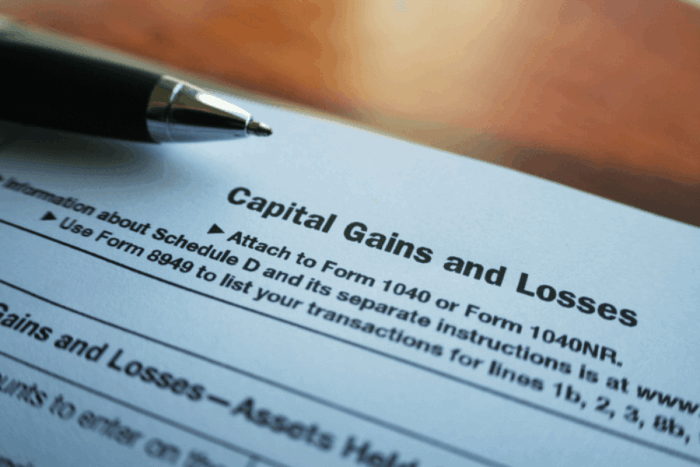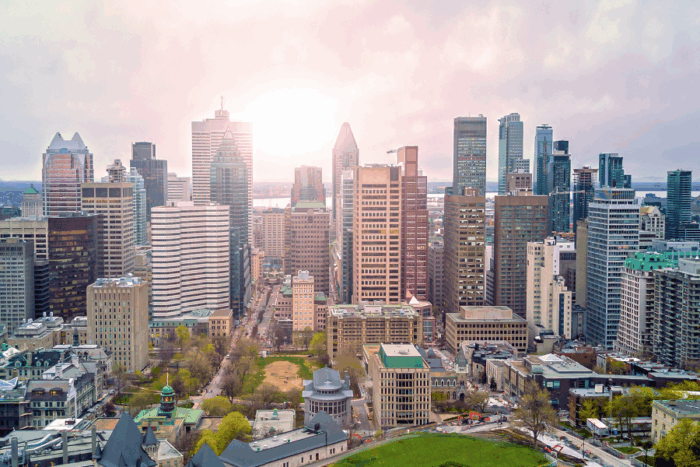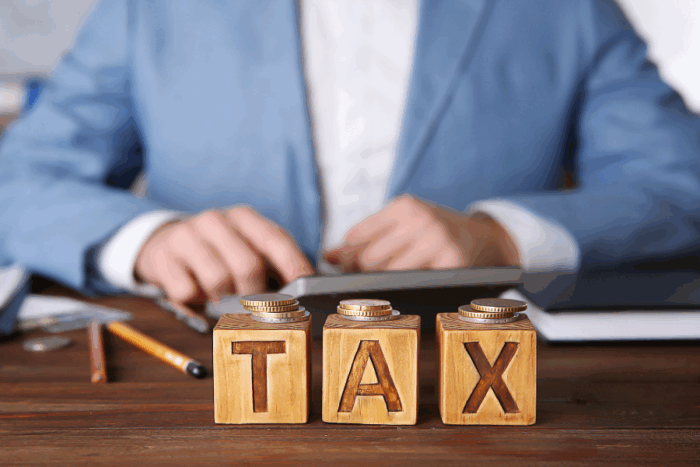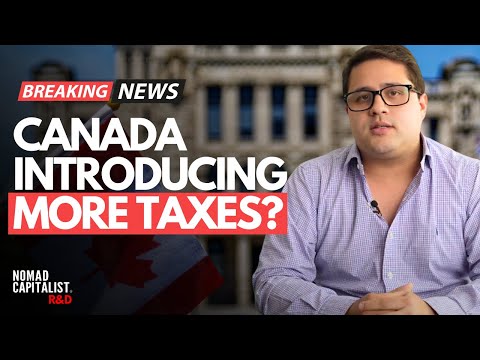Canada Capital Gains Tax: How it Works
May 21, 2025
Beneath Canada’s welcoming exterior lies a tax system that quietly drains personal and investment wealth through ordinary income, estate and capital gains taxes.
For high-net-worth individuals (HNWIs) and investors, the lack of competitive tax incentives compared to other jurisdictions can make Canada an expensive place to grow long-term wealth.
If you’re serious about growing and protecting your wealth, understanding the Canadian capital gains system isn’t optional – it’s essential.
Capital gains tax in Canada applies when you sell an investment or asset for more than you spent on it. That’s considered a realised gain, and the government expects a slice of the action by requiring you to pay tax on a portion of that profit.
The basic capital gains tax rule is that 50% of the gain is taxable at your marginal income tax rate. Unrealised gains, where the asset has appreciated but you haven’t sold it, are still yours to enjoy – at least until you decide to cash out.
On the face of it, this sounds simple enough. But the system is far from straightforward once you start digging into which types of assets are taxed, how much you actually have to pay and which taxpayers are most affected.
Add in recent policy proposals, changes and cancellations, and things get even murkier.
Whether you’re an investor, business owner, or planning for retirement, knowing how Canada’s capital gains tax system works – and how to legally reduce your exposure – can make a significant difference to your bottom line and your financial future.
To help you navigate the treacherous currents of Canada’s CGT, the Nomad Capitalist team has put together this clear, practical guide outlining how the capital gains tax rule works, what you’ll need to pay and smart strategies to help you go where you’re treated best.
Capital Gains Tax Rate Canada

Canada doesn’t have a separate capital gains tax. Instead, it folds a portion of your capital gains into your regular taxable income and taxes it at your marginal rate.
This portion, known as the inclusion rate, has historically been 50%, meaning half of your gains become, taxable gains.
In 2024, Canada’s government announced plans to increase the inclusion rate to 66.67% for anyone making over C$250,000 in capital gains annually.
And as a Canadian citizen, don’t assume you’ll be let off the hook because you live elsewhere. Canada taxes you on worldwide income if you’re a resident, with withholding taxes and filing requirements for non-residents in many cases.
What about losses?
Yes, if you lose money on an investment, you can use that to offset gains. You can even carry net capital losses forward or back a few years to reduce your tax bill.
However, relying on losses to avoid taxes is like trying to get rich by losing money strategically. It’s damage control, not a wealth strategy.
Some investments, like your primary residence, are exempt. But don’t get too comfortable – the more you earn, the more Canada feels entitled to a piece of the pie.
Canada’s tax system, especially around taxable capital gains, is increasingly hostile to entrepreneurs, investors and high-income earners. The government wants to make the rich pay, and if you’re reading this, that probably means you.
At the moment, 50% of any capital gain you make is added to your income and taxed at your marginal rate.
Under the current capital gains tax rules, a C$500,000 gain means C$250,000 gets taxed. If you’re in Ontario at the highest marginal tax rate (which can exceed 53%), you’re handing over more than C$130,000 to the Canada Revenue Agency (CRA).
Don’t forget the Adjusted Cost Base (ACB) – the price you paid for your asset, plus any fees.
This number determines how much you actually profited when you sold. The higher your ACB, the lower your gain, and thus the lower your tax.
Canada’s New Capital Gains Tax Increases
After months of panic, planning and portfolio shuffling, Canada has officially cancelled its planned capital gains tax increase.
The original plan, announced in 2024, would have increased the inclusion rate from 50% to two-thirds for individuals, businesses and trusts making over C$250,000 in gains each year, regardless of their earnings.
The government made it sound like a move towards fairness. But that was PR guff: this was an aggressive tax grab targeting wealth creators, entrepreneurs and successful investors.
However, business leaders, economists and even former Liberal Party supporters sounded the alarm. The criticism wasn’t just about the money, although, yes, it would’ve meant much bigger capital tax bills. The bigger concern was what it signalled: that Canada was becoming hostile to growth, innovation and success.
And investors noticed. There was talk of capital flight, of businesses moving south or going global and smart money moving elsewhere.
It was a classic case of tax policy backfiring; by trying to squeeze more revenue out of high earners, Ottawa risked driving them out altogether.
Enter Mark Carney, Canada’s newly elected Prime Minister. He saw the writing on the wall: His polling numbers were in freefall, so in March 2025, he pulled the plug and the planned tax hike was officially cancelled.
But, while the federal government ditched the inclusion rate increase, it kept the increased capital gains exemption, now up to C$1.25 million, for the sale of small business shares, farming and fishing properties.
That’s good news if you fall into those categories, but not so much if your gains come from capital property or investment income like equities.
The cancellation of these tax hikes is a win, sure. But it’s also a warning. The proposal didn’t come out of nowhere. It’s part of a broader mindset that’s creeping into Canadian tax policy, one that sees successful people as cash cows.
And while this particular increase is off the table for now, there’s no guarantee it won’t come back in another form with the next government.
If you’re a high-net-worth investor or entrepreneur, this should be your wake-up call. You can no longer afford to operate as if Canada will always reward your efforts. The system is becoming unpredictable.
That’s why a growing number of smart investors are making their exit plans. They’re going offshore, going global and getting serious about asset protection.
How Can I Reduce Capital Gains Tax in Canada?

If you’re in Canada and sitting on capital gains, prepare to give up a decent chunk to the government.
Quite simply, the more you make, the more they take. Recent attempts to hike the inclusion rate to two-thirds for high earners have made the message of high taxation clear.
So, how do you reduce that burden?
Start with the basics. Registered accounts like Registered Retirement Savings Plan (RRSPs) and Tax-Free Savings Account (TFSAs) offer some shelter. Gains made inside a TFSA are completely tax-free, while gains made inside an RRSP are tax-deferred.
The problem is that these accounts come with contribution limits. If you’re a high-net-worth individual, the room they offer may barely be a drop in the bucket.
You can also offset gains with losses by selling a losing asset and using that net capital loss to reduce your gains. It’s called tax-loss harvesting. However, this approach is reactive and not something you want to build a wealth strategy around.
Then, there’s the principal residence exemption.
You can sell your main home and keep the total capital gains tax-free. But again, this is one house, and you have to live in it. Flip too many homes or rent them out too often, and the CRA may decide it’s not your principal residence after all.
The truth is that Canadian tax planning is a patchwork of temporary reliefs. You’re always playing defence. Even estate planning, which can help pass capital assets to your heirs efficiently, doesn’t eliminate the tax.
On death, Canada deems most assets to be sold. That triggers gains and, yes, tax. Even dying doesn’t get you out of it. It just passes the tax bill to your family.
If you’re earning significant gains, these local strategies only go so far. The real solution? Stop playing a rigged game. Canada isn’t a low-tax country. It’s not even close. And capital gains are just one of many ways the system punishes growth.
At Nomad Capitalist, we talk about going where you’re treated best. That means setting up your life and investments in jurisdictions that reward wealth: places where income tax and capital gains are low or don’t exist at all; places that offer you the freedom to grow and protect your wealth without being penalised for doing well.
So yes, you can reduce your capital gains tax in Canada, but only by so much. If you’re serious about keeping more of your money, it may be time to stop thinking like a Canadian taxpayer and start thinking like a global citizen.
Canada Capital Gains Tax: FAQs
In Canada, 50% of your capital gains are included in the taxable portion of income. When you calculate capital gains, the actual tax you pay depends on your marginal tax rate. For high earners, this can result in a significant tax bill.
Completely avoiding capital gains tax is challenging, but there are legal strategies to minimise it. These include using tax-sheltered accounts, offsetting gains with losses and taking advantage of exemptions.
To reduce your capital gains tax, consider holding investment income in tax-free savings accounts (TFSAs) or registered retirement savings plans (RRSPs). You can also offset taxable gains with capital losses or donate appreciated assets to charity.
If the property is your principal residence, you may be exempt from capital gains tax upon sale. However, investment or secondary rental properties are subject to capital gains tax. Proper planning is essential.
A proposed increase in the capital gains inclusion rate from 50% to two-thirds was cancelled in March 2025. The inclusion rate remains at 50% for all taxpayers.
The Canada Lifetime Capital Gain Exemption functions as a lifetime cumulative exemption for small businesses, farm property or fishing property, saving you from paying taxes on all or part of the profit.
Don’t Let Capital Gains Taxes Drain Your Wealth

The truth is, Canada is no longer a tax-friendly place for high achievers.
If you’re building real wealth, the system is not designed with you in mind. It’s built to redistribute what you’ve created and the capital gains tax hikes are just the latest reminder of that.
You don’t have to settle for this.
There are countries out there that welcome wealth creators with open arms. These are places where you can legally reduce your tax bill, protect your assets and grow your wealth without government interference every step of the way.
But it will take planning. That’s where Nomad Capitalist comes in.
We’ve helped over 2,000 high-net-worth individuals go where they’re treated best, whether that means moving their business offshore, relocating to a tax-friendly country or building a personalised plan for global investing.
Our experts in tax, offshore strategy, asset protection and second citizenship work with clients one-on-one to build a tailored blueprint for freedom. If you’re ready to keep more of what you earn and live on your own terms, we’re ready to help. Get in touch today.



How To Open a Bank Account in Portugal in 5 Steps
Whether you’re preparing to relocate to Portugal or wish to conduct business in the country, opening a bank account is among the first steps you’ll need to take. Although the process is typically straightforward, there are some considerations to keep in mind before committing to any bank. In this guide, we’ll explain how to open […]
Read more

Starting a Business in Portugal as a Foreigner: Methods, Costs, and Benefits
Thanks to its EU membership and supportive business environment, Portugal has become an increasingly attractive destination for entrepreneurs from around the world. However, for non-EU nationals, navigating the process of setting up a business in Portugal can be complex. It requires a solid understanding of legal structures, taxation, and business visa options. This guide will […]
Read more

Property Taxes in Portugal: Annual Rates and Rules for Expats
Purchasing property in Portugal is often a more affordable investment than buying real estate in countries like the U.S., making it an attractive option for expats. However, real estate owners are subject to different tax rates depending on the property’s value and its intended purpose. To help you understand property taxes in Portugal, this guide […]
Read more





